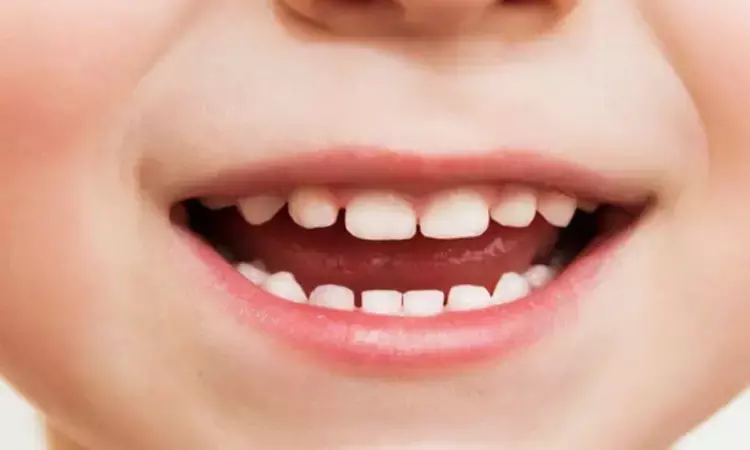- Home
- Medical news & Guidelines
- Anesthesiology
- Cardiology and CTVS
- Critical Care
- Dentistry
- Dermatology
- Diabetes and Endocrinology
- ENT
- Gastroenterology
- Medicine
- Nephrology
- Neurology
- Obstretics-Gynaecology
- Oncology
- Ophthalmology
- Orthopaedics
- Pediatrics-Neonatology
- Psychiatry
- Pulmonology
- Radiology
- Surgery
- Urology
- Laboratory Medicine
- Diet
- Nursing
- Paramedical
- Physiotherapy
- Health news
- Fact Check
- Bone Health Fact Check
- Brain Health Fact Check
- Cancer Related Fact Check
- Child Care Fact Check
- Dental and oral health fact check
- Diabetes and metabolic health fact check
- Diet and Nutrition Fact Check
- Eye and ENT Care Fact Check
- Fitness fact check
- Gut health fact check
- Heart health fact check
- Kidney health fact check
- Medical education fact check
- Men's health fact check
- Respiratory fact check
- Skin and hair care fact check
- Vaccine and Immunization fact check
- Women's health fact check
- AYUSH
- State News
- Andaman and Nicobar Islands
- Andhra Pradesh
- Arunachal Pradesh
- Assam
- Bihar
- Chandigarh
- Chattisgarh
- Dadra and Nagar Haveli
- Daman and Diu
- Delhi
- Goa
- Gujarat
- Haryana
- Himachal Pradesh
- Jammu & Kashmir
- Jharkhand
- Karnataka
- Kerala
- Ladakh
- Lakshadweep
- Madhya Pradesh
- Maharashtra
- Manipur
- Meghalaya
- Mizoram
- Nagaland
- Odisha
- Puducherry
- Punjab
- Rajasthan
- Sikkim
- Tamil Nadu
- Telangana
- Tripura
- Uttar Pradesh
- Uttrakhand
- West Bengal
- Medical Education
- Industry
CBCT imaging plays a key role in localisation and management of odontomes: BMJ Case Report

Unerupted permanent maxillary incisors pose significant aesthetic and functional problems, thereby requiring comprehensive treatment. The prevalence of non-eruption of permanent incisors is 2%, often involving the maxillary central incisors (~70.6%).
A major cause for impaction of maxillary incisors is the obstruction of eruption by supernumerary teeth and odontomes, while other causes include developmental dental anomalies and ectopic positioning of tooth buds. Odontomes, being the most common odontogenic tumours, are dental hamartomas that constitute 22% of benign odontogenic tumours. Though odontomes are mostly asymptomatic, they may present with altered tooth eruption patterns and non-vitality of adjacent teeth or may become symptomatic following local infection.
Broadly, odontomes are classified into compound and complex types, with compound odontomes further classified into denticular, particulate and denticuloparticulate types. They are rarely associated with syndromes like Gardner's syndrome and Hermann's syndrome.
Ideal management of odontomes involves removal of the obstructing odontome without disturbing the follicle to allow spontaneous eruption of the impacted tooth. This is generally observed in teeth with incomplete apex formation. If the tooth fails to erupt after 12 months, the tooth is exposed, and eruption is facilitated via bonded brackets.
Case Description
An 11-year-old male patient reported to the dental clinic with the chief complaint of non-eruption of the upper left front tooth. No relevant medical, dental and family histories were reported.
Extraoral examination revealed no significant findings, while intraoral examination revealed missing #21 with no other hard tissue abnormalities. No signs of swelling or inflammation were found on soft tissue examination.
CBCT imaging was advised, which revealed the aetiology for non-eruption of #21 to be the presence of compound odontome. An impacted supernumerary tooth with incomplete root formation was seen on the palatal aspect, at the level of apices of #11 and #12.
Multiple radiopaque structures bearing minimal resemblance to tooth structure were seen on the palatal aspect of the arch in relation to the apical and middle third of root of #22, suggestive of compound odontome.
Differential diagnoses considered include fibro-osseous lesions, ameloblastic odontoma and adenomatoid odontogenic tumour.
A full-thickness palatal flap was raised following administration of local anaesthesia, and guttering of palatal bone was done to expose the impacted rudimentary tooth and compound odontome for its surgical removal. Since #21 had an immature apex, follow-up after 6 months revealed spontaneous eruption of the tooth with no subsequent complications.
Learning points
► CBCT imaging plays a key role in the localisation of odontomes and subsequent treatment planning.
► Early management of impacted anterior teeth is crucial to avoid dental complications like loss of space and midline shift.
► Typically, the impacted maxillary incisors erupt spontaneously following removal of the obstruction, eliminating the need for complex treatment procedures.
► A higher incidence of cystic changes and resorption of roots of adjacent teeth are observed in case of delayed treatment.
Source: Marappa Sathyamoorthy SK, Chakrika H, Dhinakaran M. BMJ Case Rep 2021;14:e244457.
doi: 10.1136/bcr-2021- 244457
Dr Ishan Kataria has done his MBBS from Medical College Bijapur and MS in Ophthalmology from Dr Vasant Rao Pawar Medical College, Nasik. Post completing MD, he pursuid Anterior Segment Fellowship from Sankara Eye Hospital and worked as a competent phaco and anterior segment consultant surgeon in a trust hospital in Bathinda for 2 years.He is currently pursuing Fellowship in Vitreo-Retina at Dr Sohan Singh Eye hospital Amritsar and is actively involved in various research activities under the guidance of the faculty.
Dr Kamal Kant Kohli-MBBS, DTCD- a chest specialist with more than 30 years of practice and a flair for writing clinical articles, Dr Kamal Kant Kohli joined Medical Dialogues as a Chief Editor of Medical News. Besides writing articles, as an editor, he proofreads and verifies all the medical content published on Medical Dialogues including those coming from journals, studies,medical conferences,guidelines etc. Email: drkohli@medicaldialogues.in. Contact no. 011-43720751


